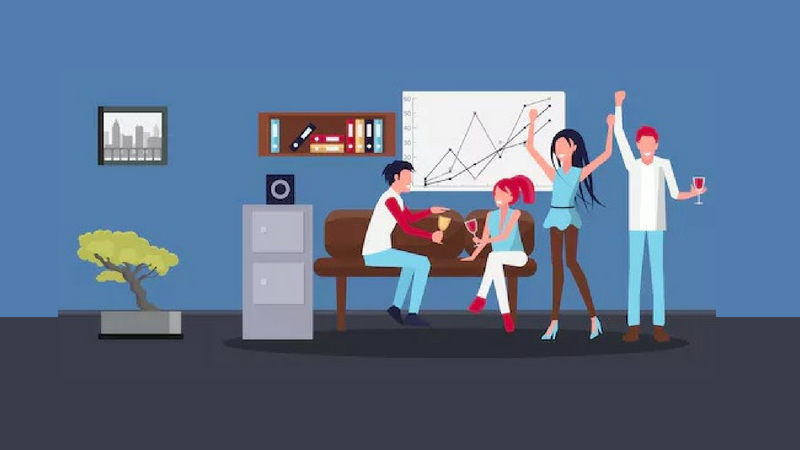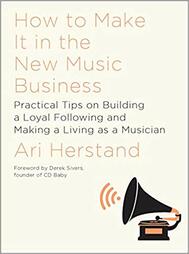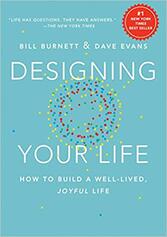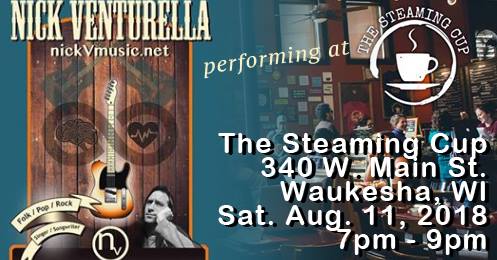|
Artificial Intelligence (A.I.) may help your business succeed now and in the future, but Customer Intelligence (C.I.) will always win.
Here’s what I love about the business discipline of customer experience, customer engagement, customer success and advocacy it’s all about using communication to build relationships at scale, but not just any type of relationship, we’re talking about trusted, human relationships. How do you appeal to an individual human when you are trying to build such relationships at scale? The answer is that you speak to, and connect with, the individual. Companies are not people. People run companies. Even if you don’t have the resources to buy fancy technology that helps you easily scale the presentation of personalized communication or information tracks to your fans and customers, you can be personal in your content by writing it as if you are writing to an individual — your target audience. This is the kind of individual with whom you know your message will resonate to help advance the relationship while bringing value to them. A key is ensuring you’re messages bring value to the recipient without expectation of anything in return… Or, if you do expect something in the return, that return needs to have less perceived weight in its value, take less energy, or time on the part of the recipient than the value you are providing to them. Oh, and frame it as an opportunity, not a favor. Favors are not advocacy, they burn people out. Favors make advocates avoid you. Did I mention, don’t ask for favors? Why is all this important if you’re a solo-practitioner, creative entrepreneur, or even a publicly traded enterprise SaaS business? …because… Ever since the internet came along — the second marketing rebellion, according to Mark Schaefer — the power of information transferred from companies to customers. Customers are in control of the purchasing and buying cycles like never before. They research information and ask peers for recommendations rapidly, and in far reaching ways across the internet. This leads to the lack of control companies have in their marketing — what Schaefer refers to as the third marketing rebellion. Now, customers are not only in control of buying cycles, but in many ways, the marketing messages themselves because that’s what they trust — hearing from peers and others like them, not the companies producing the solutions. So, what does this mean for you and/or your company’s marketing efforts? It means, you have to determine how best to operationalize and facilitate your customers’ to be your marketers and sales people, and product development idea generators and support reps and partner program facilitators, and more. The only way you’re in business is if you have customers, and in this day and age you’ll need to partner with your customers as part of your company’s extended team (perhaps the most important team members) to create great and engaging experiences that customers help shape and get to own. Not only does this help customers have the kind of experience they want as they interact with your business, but it makes your job easier by taking the guesswork out of deciding how to provide what your customers need. The only real way to create such a partnership is to have authentic, real communication with customers that builds trusted relationships. Whether you're a musician, new startup or an established enterprise, you have customers who are responsible for your endeavor's income.
Those customers are your best sales and marketing team as well as your best source of income growth. But only if you provide them opportunities to benefit from a relationship with you. Like engaging employees to cultivate internal brand ambassadors and the kind of company culture you want, when you build a similar relationship with your customers you can expect similar results. However, in both cases you have to be human in your interactions -- these are people you're dealing with, not just numbers on a spreadsheet or assets. That means you have to have good emotional intelligence and provide value to get value. This is not the time to ask your best customers for favors. Present them opportunities that appeal to their ability to achieve their own personal and professional success. Opportunities that also help your organization -- a true, transparent, win-win. This can be done at scale with various advocate marketing platforms (Influitive is great for this). These kinds of platforms help you continuously stay engaged with your customers and help them want to stay engaged with you. You might think of it a bit like a dedicated social network for your customers -- a place to consistently provide your customers content and activities that are relevant to their role as they use your products or services. Because the experience is individualized, by engaging, customers gain relevant industry education, opportunities to network with professional peers and get recognition for their successes while having all sorts of opportunities to provide their unique feedback on (and therefore, have some level of ownership in) the next iteration of your product or service. There is gamification involved, which is fun and initially sparks action from your customers to engage, but I've found that they stick around because there are more intrinsic values that resonate with the customers once they've started to engage. Those intrinsic values are presented by opportunities that appeal to the customer first, and your company second. What advocate marketing platforms really come down to is building a reciprocal, healthy relationship with your customers. One that is a win-win, benefiting both parties. You know, like a partnership. This kind of partnership, is what will extend the lifetime value of your customers. Instead of only having customers that buy one time and leave in a year, you can help keep those customers for several years and even have them interested in add-on purchases from you (this is where current customer growth can happen at scale). However, these things have to be cultivated over time, and you have to remember you're dealing with humans, not assets or numbers. That means you have to want to build real, meaningful, professional relationships. What's really interesting about this concept to me is that it can be applied to just about any business, and you don't have to have an advocate marketing platform to accomplish some level of this. Even though I'm a marketer, I'm also, and always have been, a working musician, as such, I keep in touch with those who follow my writings and music -- fans (my customers) -- regularly. Primarily, I do this through an email newsletter that provides exclusive content to my readers that I don't publish elsewhere online. I try to pack valuable pieces of information in those newsletters that can be useful to the individual humans (fans) who subscribe and consume it. The result is that over time we get to build a relationship and a rapport of sorts. Through opportunities for feedback I learn about my fans' preferences and their ideas for songs or additional products I create, and I take that feedback seriously and implement as much of it as I can to continue to provide my fans (customers) what they've shared they want and need. The ultimate result, is having customers who have been cultivated over time to become your advocate because you've developed a relationship with them. They trust and believe in you, your business, product or service. Plus, you become their advocate for similar reasons, and thus, genuinely want to see their success because you care about them. Did you know your customers can help you fix just about any business challenge you have?
Yup, it's true. Along the journey of engaging your customers, if done well with the customers' interests in mind first and foremost above your own, the customer can and will help you solve most of your business issues.
Things you may not be thinking of related to the above stats are that not only are your current customers likely buying more from you over time, but if they love you, they’re referring others to you, and helping you to close new business as a genuine and credible reference customer. If ever there was a silver bullet business growth strategy, it’s your current customers. Are you a new business? Then hustle to get your first few customers and engage the heck out of them. Help them be successful in their business even if it seems a bit beyond the scope of what your products/services are designed to do. Business is done by people. Be genuine, care about your company, your employees, your customers and their employees. Everyone needs to make a living to support themselves and their families – to live their lives in meaningful ways. If you put forth the effort, I can guarantee you that commercial karma will come back to you in spades. What are you doing to engage your customers to be wildly successful with your products/services? What inspires you about those you admire?
I was thinking about this, and I think it has something to do with being aspirational. In other words, you aspire to be more like the person that inspires you. But, what is it that inspires you about that person? If you can’t pinpoint one, two, three, or more specifics things then how can you aspire to be more like them? Just like you, I’ve had some bad bosses and work experiences in my career, but I’ve also had the pleasure of working for some really great bosses who made my work experience at that organization more than worthwhile. Those good bosses were inspirational, and I aspire to be more like them. They genuinely valued my work. They had real interest in me as a person, and as a result, I wanted to give them my best effort. Meanwhile, the effect of the inspiration / aspiration continuum is helping me give myself my best effort, which serves me and my own career well. So, it made me realize that I wanted to aspire to genuinely value the work of those around me and have real interest in what’s going on in their lives, and by doing so, perhaps I can inspire others to be aspirational in a positive way that showcases their best version of themselves...for themselves and others around them. growloop it’s easy to get frustrated with all of the little things that seem to wrong throughout the day.
When things don’t go exactly as planned the slippery slope of negative self-talk ensues. So the coffee spilled in the car because you were in too big of a hurry. That doesn’t mean you need to tell yourself how dumb you are for allowing that to happen. Negative emotions and experiences tend to be remembered far longer than positive ones. However, the positive ones hold the most power to improve your mood, outlook, and mindset, which is why it takes consistent practice to stay in a positive mindset. Regularly examining the positive things in your life helps build the “positivity habit” (aka: gratitude). This habit can help you feel confident and competent to take on whatever life throws at you. For every negative thing you can list on a sheet of paper today think hard and list two things you’re grateful for. Then see how you feel afterwards. growloop Never stop learning. One way to continually inspire yourself with new ideas is to read. I like to always have a book or two that I'm reading (or listening to on Audible). The following list are the books I read in 2018. Not as many as I would have hoped to have read, but hey, 2019 is a new year. The list is not in any particular order. The list below does contain links to each of the books on Amazon if you're interested in them. No, they are not affiliate links.
Posted by, Nick Venturella Join Nick's Investors Club now
I'm sitting at The Steaming Cup in Waukesha, WI just chilling waiting to start performing my music set here this evening.
It's about 6pm on a gorgeous summer evening. The sun is still out but beginning it's decent. I was fortunate to spend most of the earlier part of today with my two little boys at the beach. I sit with my cappuccino looking out at downtown Waukesha, which has been revitalized since I grew up here into a great little Arts scene full of art galleries, eateries, wine and traditional bars, and coffee shops, and many establishments host live music at least sometime each week. I had some realizations as I sat and pondered my thoughts... When I grew up in Waukesha I used to come downtown here to the original Sprizzo coffeehouse location to play open mic night every week. It's one of the first places I got my music performing start. Side note...in my opinion the original Sprizzo was the first Arts-related coffeehouse in downtown Waukesha when it opened in the '90's. It changed owners a few times and eventually moved across the street into a newer space before ceasing to exist in 2015. There is a positive arts vibe here in downtown Waukesha that I realize now was really just getting going when I was in my formidable years here. At the time I didn't even know what I was a part of. Now it's a thriving Arts community for other generations. It used to be I couldn't wait to get out of Waukesha, but I do wish I could have grown up starting my music career with the downtown as Arts focused as it is today. However, I am humbled to have had the good fortune to really start my music and Arts career here. Just by having the opportunity to be a musician, book gigs, promote those shows and sell tapes (yes, tapes) and then CDs, and do so among friends who were doing similar things -- we all learned a ton about being entrepreneurial artists and marketers. That experience has been invaluable. I guess what I'm most proud to see in Waukesha's downtown is that the Arts are winning there, economically. It's still tough to make a living making music, but in downtown Waukesha it's embraced a little more than in other places. Knowing I have contributed to, and continue to have the opportunity to participate in, the Waukesha Arts scene puts a smile on my face. These days Madison, WI is truly home with an unmatched vibe and music community, but I'm thankful for having the Arts experiences and exposure I had growing up in Waukesha. Posted by: Nick Venturella There is something very vulnerable and invigorating about being naked in front of a crowd.
I don't mean that kind of naked. I'm talking about busking as a musician. In this case it was just me and my acoustic guitar -- no microphone or PA system to amplify the sound for the outdoors. Totally stripped down and naked...at least as naked as I prefer to be in public. I had a great experience busking recently at the Hilldale Farmers Market this past Saturday morning. It was a rather hot summer day, but worth enduring the heat. I played my tunes in a stripped down fashion without any amplification for those milling about to each vendor's booth buying fresh produce and baked goods. As a musician, busking feels a little awkward at first because you're not really the main attraction, it's not necessarily your show like at a club venue where people come specifically to see you perform. In some ways you feel like you're interrupting the market attendees' shopping experience. However, as soon as you start playing that feeling subsides and it's replaced with a feeling that you're actually enhancing their experience. It's kind of like going to a store to shop and they have music playing over the speakers while you browse the shelves for items you want to purchase. Only, in this case, it's a live musician, which is more engaging. Busking is fun as a musician because you can quickly tell if people have interest in your music. When they're interested they typical stop to listen for a while or you can see people bobbing their head to the rhythm of the song you're playing. A really nice indication that they like your music is when people drop a few bucks into your tip jar. When this happens, as a musician, it's important to thank people for giving you a tip even in the middle of the song you're playing, or at least give them a nod to indicate that you saw them give you a tip and that you appreciate it. In college I used to busk regularly downtown especially in the fall when the new school year started and there was a lot of people around (I live in the college town of Madison, WI). As a young college student coming into my own as a singer/songwriter, busking was a great time to work out the kinks in new songs. It's like practice with a live audience, and because people are going about their business most are only partially listening so if you make some mistakes as you play no one but you would likely notice. If you're a musician working on your chops I recommend busking somewhat regularly as a method of practicing. If you pay attention you'll be able to spot which of your songs resonate well with audiences, you can work out set list orders and simply practice your songs. You'll probably even make a few bucks too. I remember as a poor college student busking was always a way to make some quick cash. Busking for a musician is like conducting market research or utilizing a focus group to perfect your product -- your music and performance -- for your audience. Busking falls into the "honing" portion of honing one's craft. Truth be told, you have to put in the work to get better and better, and if you do, it will be obvious to others. Thanks for the great experience Hilldale Farmers Market! I hope to be back soon. Next stop on my summer of shows, I'll be performing at The Steaming Cup coffeehouse in my old stomping grounds of Waukesha, WI. Sat. Aug. 11, 2018, beginning at 7pm. Be sure to come on out. posted by Nick Venturella "Do what you love and the money will follow," they say. "Find your bliss and just do that for a living," they say. They make it sound so simple. I wonder how many of them actually work as if it's play with any consistency? I consider myself fortunate to have several creative, strategic and entrepreneurial interests and paid work that often infuses those interests. I mean, not everyday does work feel like play. In fact, most days it's just a grind. But the small victories, and larger victories over time, really do make it worth the effort. However, I do get to be creative everyday, I do get to be strategic everyday and my mindset is always entrepreneurial, so I have that going for me. So, even though I don't make my entire living as singer/songwriter, I do have the good fortune of having periodic paid performances. And, I also have the good fortune of being gainfully employed where I can use my writing and graphic design skills strategically toward real business outcomes, which is appealing to me. Plus, I have a great newsletter following that helps create community for me and others like me who subscribe, which brings those fun, thought-provoking aspects of what I do, and what all my subscribers do, to one another in a way that resonates in our lives. All this is to say, that while I don't have one profession that simply and easily encapsulates my 'doing what I love for a living,' I'm making a good living and infusing what I love into the work I do, consistently. This is, perhaps, a more realistic approach anyway. This Month, in May, if you find yourself in Verona, WI or Wales, WI come check out one of my music performances: Feel free to check out some free streaming/downloadable music at NickVmusic.net
Have you ever recommended a good movie you saw to a friend? Then, after your friend saw the movie she thanked you for recommending it? That’s customer advocacy on a basic level. You, the customer who saw the movie and liked it, advocated on behalf of the movie by recommending it to a friend you knew would likely enjoy it too. That customer advocacy can scale too… Say the movie was part of the Star Wars series of movies. There is an entire fan ecosystem around those movies. The producer of those movies (Disney) interacts and engages its fans with special events, fan websites and communities, contests and even opportunities for fans to share their thought leadership on various Stars Wars-related topics. It’s true, you can check it out at StarWars.com. What ends up happening is that the Star Wars franchise has helped individual Star Wars fans feel valued for their interest and participation in the Star Wars community. Fans have even been rewarded and recognized for their Star Wars thought-leadership contributions to the community. In this example, Star Wars/Disney makes their franchise about the fans, and as a result those fans continue to advocate on behalf of Star Wars providing that franchise with more promotional power than Disney alone could produce. What’s the ROI of Disney putting their Star Wars fans first? According to a Fortune Magazine article from a few years back, it was nearly $42 billion. That’s billion, with a B. Not bad for a few sci-fi fantasy movies. Here’s the thing, these same Star Wars advocacy fundamentals can be applied to B2B Software-as-a-Service (SaaS) tech businesses, and it just so happens that I personally know the Yoda and Obi Wan Kenobi who can share the ways of the Customer Advocacy Force... Join the webinar - Customer Success + Marketing: How to Team Up to Boost Advocacy. February 22, 2018 @ 10 am (PT) / 1 pm (ET) Join Howard Tarnoff (Founder & Managing Director of Customer Success LLC) and Carlos Gonzalez (Vice President of Customer Success Operations at Ceridian) as they reveal the advocacy playbooks they respectively use to:
Post by: Nick Venturella
|
Invest in yourself. Get creative/business/life insights in your inbox - sign up for my eNewsletter.
Archives
December 2023
|




















 RSS Feed
RSS Feed

